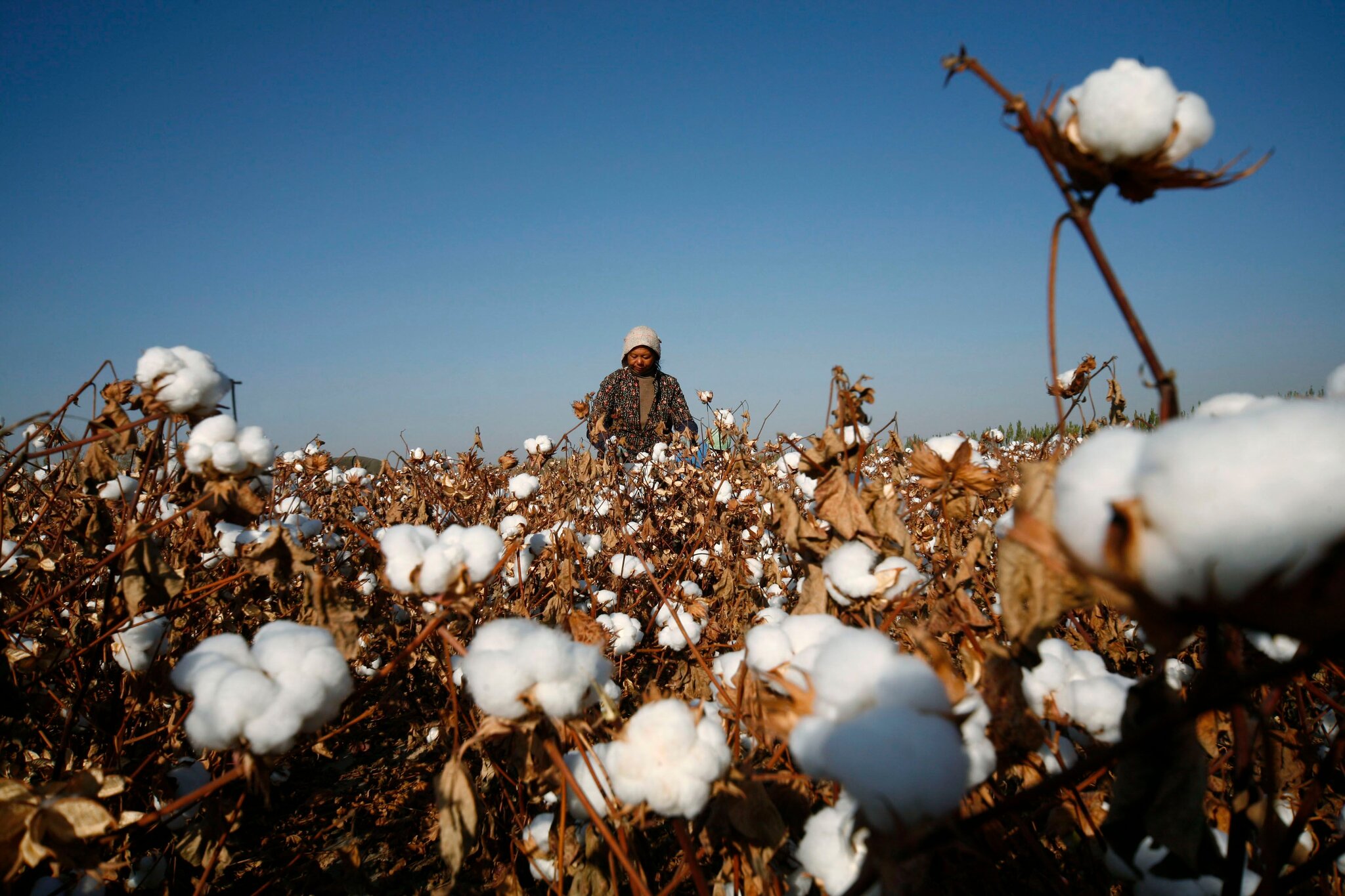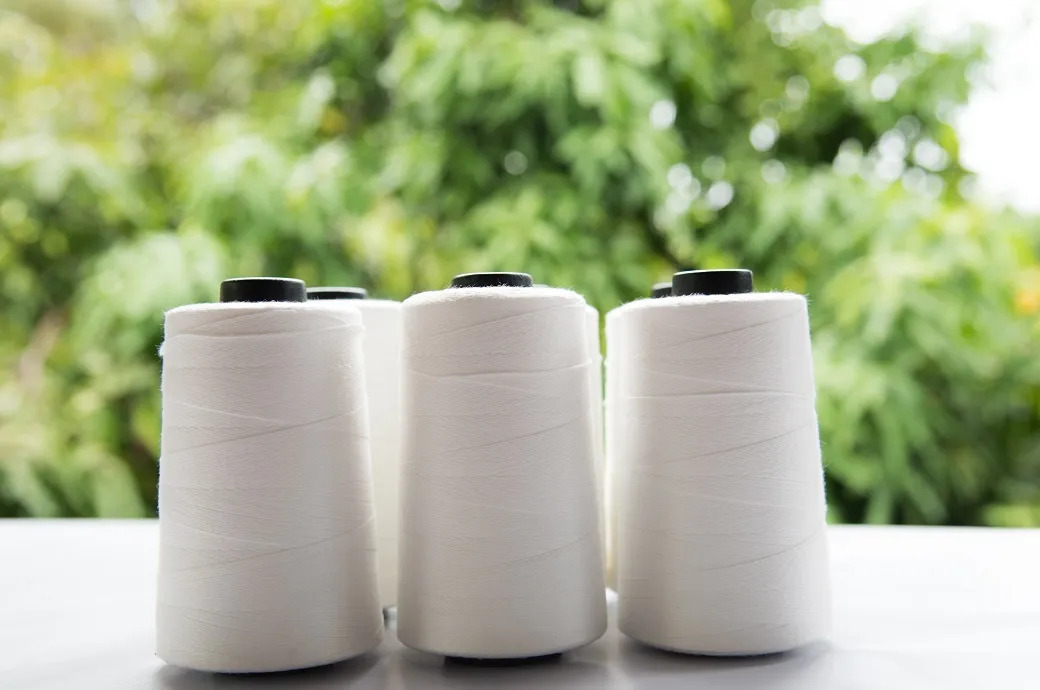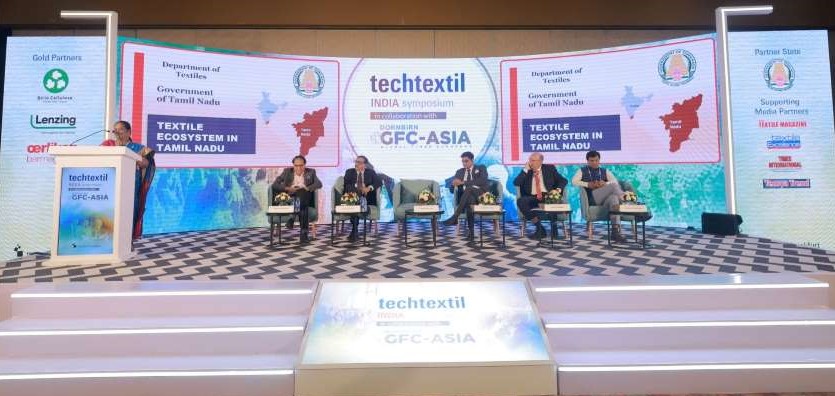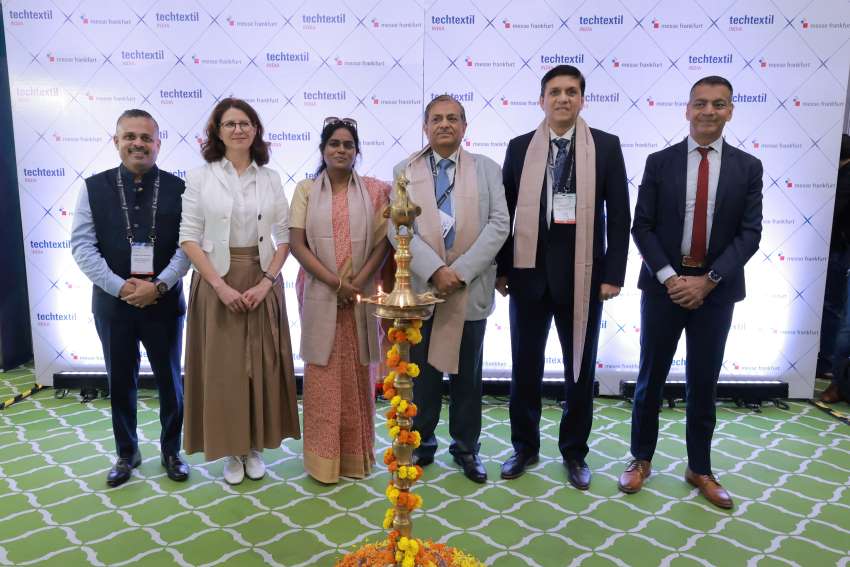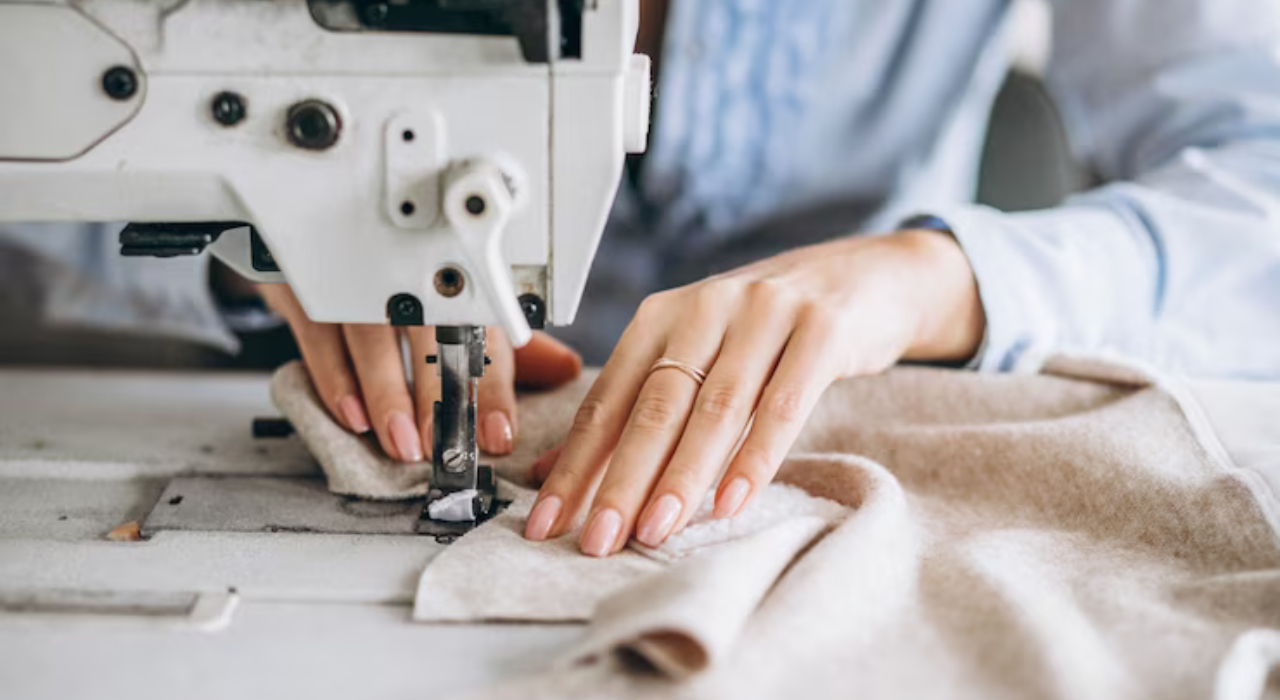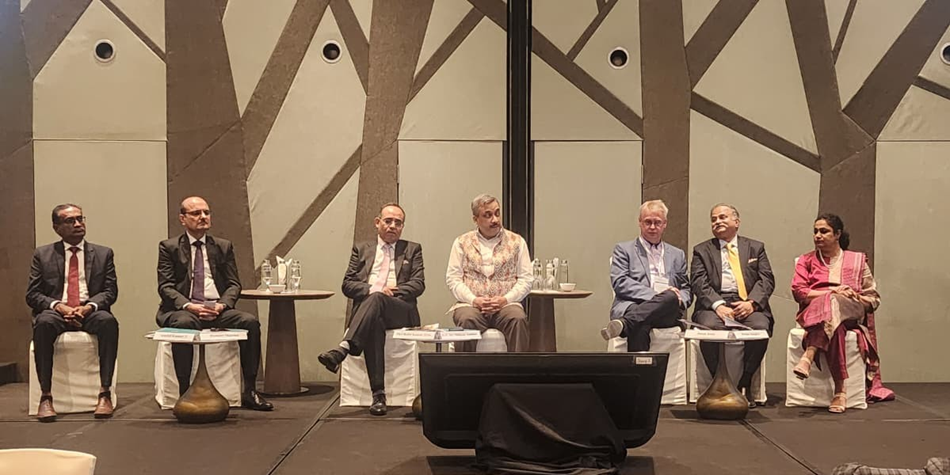FW
"The second largest garment exporter in the world, Bangladesh’s RMG export was $28.668 billion in 2016. Looking at its potential, the government has set a goal of reaching $50 billion in exports by 2021. Considering the current consumption, approx three billion metre of woven fabric is required for export per year. Local mills are capable of producing only around 45 million metres of fabric, which is around 14-15 per cent of the demand. The country is spending almost $4 billion to import fabric every year."
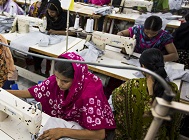
The second largest garment exporter in the world, Bangladesh’s RMG export was $28.668 billion in 2016. Looking at its potential, the government has set a goal of reaching $50 billion in exports by 2021. Considering the current consumption, approx three billion metre of woven fabric is required for export per year. Local mills are capable of producing only around 45 million metres of fabric, which is around 14-15 per cent of the demand. The country is spending almost $4 billion to import fabric every year. There lies a big gap in the supply and demand. Investing in woven fabric manufacturing means saving huge forex, offering a big boost to the economy.
Shorter lead times
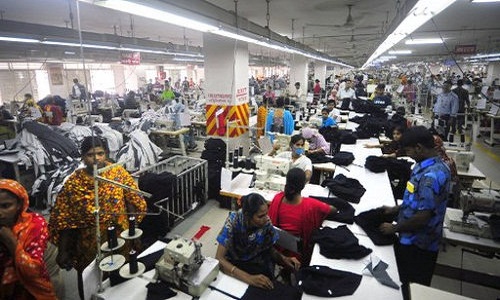
Going by the fast changing fashion trends, nowadays most of fashion retailers want products in 60 days, implying 30 days for fabric production and 30 days for garments making. If there is strong support from local mills, a product can be developed 2-3 weeks faster in comparison with the fabric of foreign origin. This would be an added advantage for the country. Working with local suppliers also helps companies in sorting issues that may crop during order processing. For instance, if there is quality issue with a Chinese origin fabric, it takes almost 3-4 weeks to arrive at solutions, considering the email communication, sending evidence or a supplier representative visits, etc. But in case of local mills, it can be sorted in just a week.
Least complexities & risk
While importing fabrics, a number of commercial processes are considered. But if it is a local supplier, things are easy. For instance, if you have a rejected fabric and you need to return it back to source and get replacement fabric, it would take only couple of days for local mills but for foreign mills, it may take months. At the same time, when there is an issue in business and you are in the same country, the risk management is very easy.
Price challenge
Price is one of the biggest challenges for garment manufacturers as well as fabric suppliers. Compared to competitors like India, Pakistan and China, the country’s fabric prices are high, as it doesn’t produce cotton. But Bangladesh has comparatively cheaper labor cost. So, the country needs to trade off with that and needs to keep its fabric cost as low as possible to survive in the market.
Product diversity
Bangladesh mostly produces basic products mainly cotton based in solid, print and yarn dyed and denims. Bangladeshi woven fabric manufacturers’ product range is very narrow. There is a huge demand for different kinds of fabrics. Retailers are looking for more technical fabrics with different functional properties. So, Bangladeshi fabric manufacturers need to be ready for this and diversify their products in those areas as well.
Most mills are not producing high stretch products. Mill’s capacity being limited they make more basic volume products, and innovation is low. One of the other major categories is denim. The country has a strong market share in this segment. There are in 30 denim mills, which produce 25 million metre fabric per annum. Today, the country is No. 1 jeans exporter to Europe and No. 3 to the US.
Local support – a must
Huge investment is needed in woven sector as backward linkage of garment industry to achieve $50 billion by 2021. Without strong support of raw materials, the country cannot achieve this goal. There is also a need to look for diversified products and train manpower to harness newer opportunities. In order to compete, the country needs to ensure competitive price, quality and excellent sales service to RMG sector. On top of that, there is a strong need to promote Bangladeshi fabrics in a big way across the globe to gain major market share.
Yarn Expo will be held in China from March 15 to 17, 2017. It will showcase some of the world’s highest quality yarn and fiber products, such as natural and blended yarns, including cotton, wool, flax/regenerated flax, silk, and man-made fibers and yarns as well as specialty products including elastic, and fancy and blended yarns.
The 2017 edition has expanded by nearly 20 per cent this year. There will be over 390 suppliers from 12 countries and regions including China, Hong Kong, Japan, India, Indonesia, Korea, Pakistan, Singapore, Slovakia, Thailand, Uzbekistan and Vietnam.
This year, the fair will once again cover a comprehensive range of high-quality sourcing options to accommodate the changing needs of the market. Exhibitors from India, Pakistan, Uzbekistan and Vietnam will showcase competitive cotton yarns, elastic yarns and eco-products. Exhibitors from Indonesia, Japan, Korea, Slovakia and Thailand will exhibit a series of cutting-edge fancy yarns and synthetic, knitting and metallic fibers and yarns.
Other than selling and sourcing, fairgoers can also gain inspiration and learn the latest market insights. Together with Yarn Expo, four other textile trade fairs will be held concurrently: Intertextile Shanghai Apparel Fabrics, Intertextile Shanghai Home Textiles, PH Value and China International Fashion Fair.
Association of Suppliers to the British Clothing Industry (ASBCI) is hosting a conference in the UK, April 5, 2017. The focus is on sustainability and best practices for sustaining people, planet and profits. Corporate social responsibility as a whole has been increasing in importance within the corporate agenda, with particular attention being paid to sustainability and ethics.
Sustainability is placed on top of the global fashion industry agenda. Since then most big brands and retailers have implemented their own robust ethical and environmental sustainability programs with the collective objective of protecting people and the planet. Some are doing it better than others and reaping the rewards.
The best sustainability practices, processes and products are reducing waste, transport and material costs and boosting brand image, efficiency, customer loyalty and share prices. Whether it’s the working environment for employees or the impact on local climates, all parts of the supply chain are putting manufacturing under increased pressure.
The Association of Suppliers to the British Clothing Industry, founded in 1973, is a not-for-profit UK-based organisation with a membership that represents all key sectors of the clothing and textile supply chain. It is a forum where component suppliers and fabric producers can exchange ideas and knowledge with designers, retailers and garment cleaning specialists.
A factory in Myanmar making clothes for Swedish fashion retailer H&M has been vandalized. Hundreds of workers stormed the factory and damaged facilities including textile machinery, computers and surveillance cameras. They were demanding better conditions and benefits. Production at the factory has been halted since February 9. The dispute started with a strike in late January following the sacking of a local labor union leader. Workers demanded better performance review system and health care coverage.
It turned violent on February 9, prompting the factory's closure. The Chinese company makes garments such as skirts and shirts exclusively for H&M. H&M sources the bulk of its clothes in Asian low-cost countries such as Bangladesh, Cambodia and Myanmar. Ironically H&M is widely seen as being at the forefront among large apparel companies in promoting workers’ rights and fair wages. The company has called on sourcing countries such as Cambodia and Bangladesh to ensure fair pay for workers.
Myanmar’s fast growing textile industry, which employs more than 3,00,000 workers, has become attractive to global apparel brands such as H&M and Gap following the easing of economic sanctions by the United States and the European Union. But the country is a latecomer and it has some way to go in terms of well-defined labor laws.
The Italian company Cifra designs and produces seamless socks, tights, pantyhose and seamless garments for intimate apparel, active wear, body shapers, posture garments and swimwear for leading retailers and brands. Cifra has an innovative approach to seamless garment manufacture using double needle bar jacquard raschel knitting machines.
It has the largest plant of double needle bar jacquard machines in the world, which are mainly supplied by Karl Mayer. Now, Cifra is planning to invest in new Karl Mayer RDPJ 6/2 EL double needle bar jacquard machines in 24 gauge to meet increasing demand for its seamless products. These machines will help increase capacity and meet the demand for sportswear and hosiery.
For sportswear, Cifra mainly uses Karl Mayer HDRJ 6/2 and HDRJ 4/2 in 24 gauge (needles per inch). Cifra has also been developing new seamless warp knit products in merino wool for some of Europe’s leading brands. Merino wool, or any wool, is not normally knitted on seamless warp knitting machines. These machines are more productive than current flat knitted products.
These merino wool products are in the collections of leading brands for both sport and fashion. Merino wool yarns Cifra is using for the new seamless project have been specially developed by leading wool spinner Schoeller.
C&A Foundation has launched a global initiative aimed at helping brands, retailers and manufacturers find more innovative and sustainable ways of producing fashion. The initiative, called ‘Fashion for Good’, offers practical action in the form of support, funding and roadmaps, and by fostering a sector-wide collaboration rather than competition and aims to enable innovation and widespread adoption of good fashion practices.
C&A Foundation is the charitable arm of global fashion retailer C&A. Fashion for Good re-imagines how fashion is designed, made, worn and reused so that people, companies and the planet can thrive. By mobilizing around a collective innovation and investment agenda, it aims at sparking and scaling up technologies and business models that have the potential to change the sector profoundly. The target is a better future for the fashion industry in which brands, suppliers, communities and the planet can thrive.
Fashion for Good is a joint industry initiative involving the Sustainable Apparel Coalition, Ellen MacArthur Foundation and Sustainable Trade Initiative. Fashion for Good will launch its first hub in Amsterdam on March 30. The new initiative is part of C&A Foundation’s wider efforts to drive the transition to circular fashion by nurturing and scaling solutions that can change the way clothes are made, used, and reused.
Adidas intends to accelerate sales and earnings growth until 2020 as a part of its long-term strategic business plan. The company expects currency-neutral sales to increase at a rate between ten per cent and 12 per cent per year between 2015 and 2020. Net income from continuing operations is projected to grow between 20 per cent and 22 per cent per year in the five-year period.
The strategy remains on significantly elevating brand desirability and achieving strong improvements in sales and profitability. The company’s culture is based on the core belief that, through sport, all Adidas employees have the power to change lives. As part of the accelerated growth plan until 2020, Adidas is focusing its HR initiatives on leadership, talent development and performance management.
As a part of a digitalisation offensive, the company plans to significantly drive direct sales. In addition, improvements in digitalisation processes at every stage of the value chain are targeted to accelerate building direct relationships with the consumer. Digital technologies such as 3-D creation, 3-D printing and smart manufacturing methods are already used in the development and production of Adidas products. These technologies will be expanded even further.
The company will sharpen the focus of its brand portfolio, concentrating even more strongly on the Adidas and Reebok brands and its core competencies in the development and marketing of sports and sports-inspired footwear and apparel.
"When the UK exits the EU, it will forfeit access to the Pan-Euro-Med (PEM) cumulation zone. Cumulation of origin is one of the ways to allow greater flexibility when it comes to using raw and semi-manufactured materials in the production process. It allows a member of a trade agreement to use originating products from other members. While in the EU, the UK has access to Europe’s cumulation zone known as the Pan–Euro–Med (PEM) zone."

When the UK exits the EU, it will forfeit access to the Pan-Euro-Med (PEM) cumulation zone. Cumulation of origin is one of the ways to allow greater flexibility when it comes to using raw and semi-manufactured materials in the production process. It allows a member of a trade agreement to use originating products from other members. While in the EU, the UK has access to Europe’s cumulation zone known as the Pan–Euro–Med (PEM) zone.
The PEM zone currently comprises the EU, the EFTA States (Switzerland, Norway, Iceland and Liechtenstein), Albania, Algeria, Bosnia and Herzegovina, Egypt, the Faroe Islands, Israel, Jordan, Kosovo, Lebanon, the former Yugoslav Republic of Macedonia, Montenegro, Morocco, Palestine, Serbia, Syria, Tunisia and Turkey (and partially Andorra and San Marino). It is based on trade agreements (FTAs, customs unions, etc.) with identical rules of origin signed between members.

The PEM Convention allows cumulation of originating materials between different countries within the zone. In some cases, the operations conferring origin of non-originating materials can take place across the entire cumulation zone. The latter, referred to as full cumulation, in the context of the PEM zone operates within the European Economic Area (EEA) and between the EU and Algeria, Morocco and Tunisia.
Significance of PEM
Leaving the PEM zone will impact all UK industries currently taking advantage of this arrangement. Under the PEM Convention, most clothing goods are subject to a double transformation rule. The double transformation rule of origin means that at least two substantial stages of production are needed to confer origin: in order for an item of clothing to obtain preferential origin, the weaving of fabric from yarn and the cutting and sewing of a garment from fabric would need to take place within the PEM zone.
For example, coats made in Morocco from both EU and Turkish fabrics can be exported to countries within the PEM zone. If Turkey and Morocco were not members of the PEM zone, Turkish inputs would be considered non-originating and the coats would not be eligible for a preferential tariff when re-exported to the EU (or vice versa to Turkey) according to the double transformation rule of origin.
Under full cumulation, qualifying processing does not need to occur within the territory of one single country. The different stages of production carried out across the cumulation zone can count towards the common origin of non-originating materials. For example, if non-originating yarn woven into fabrics in the EU is exported to Tunisia to be cut and sewn into suits, the final product is considered as originating in Tunisia. However, as full cumulation is not currently possible across the entire zone, the finished suits can only be exported under preference to the EU, Algeria and Morocco.
The PEM rules of origin favour local T/C companies. As the fabric used to manufacture goods cannot be imported from outside the zone, there is an incentive to retain most parts of the production chain within the zone. At the same time, the PEM zone can offer a number of benefits to T/C companies that face strong competition from exports from developing countries.
Access to raw materials such as cotton and flax, as well as to synthetic fibres, is essential to maintaining competitiveness. Price increases can also affect textile & clothing companies. For example, when India banned exports of cotton in 2010 and 2012, it caused price speculation in the market. Access to firms specialising in certain processes, such as dying in Tunisia or the spinning of fibres in Turkey, can be of equal importance. Finally, the relatively low labour costs in North African or Eastern European countries, such as Bulgaria and Romania, allow for the labour-intensive stages of production to take place there.
Impact on EU-UK FTA
The UK will lose access to the PEM cumulation zone once it leaves EU. Even if the EU-UK FTA is negotiated and in force before this occurs, the UK would also need to have agreements in place with PEM countries in order to benefit from access to the cumulation zone. Currently, UK producers can use originating materials from all PEM countries with which the UK has a bilateral agreement without losing the originating status. The final good, provided it fulfils PEM rules of origin, can be supplied/exported to all qualifying PEM countries. Under full cumulation, non-originating products can also be used since the processes undertaken in different countries can be counted towards originating status.
If the UK negotiates an FTA with the EU with separate rules of origin, the products manufactured in the UK would still need to comply with these rules to gain access to the EU markets. However, if, following the signing of such an FTA, the UK negotiates a similar agreement with any other PEM country, cumulation of origin between these two agreements would not be possible without renegotiating the EU–UK FTA rules of origin protocol.
The UK needs to decide between negotiating its own rules of origin with the EU on one hand and retaining the PEM rules on the other. It does not necessarily mean that the UK will be able to negotiate more flexible and less restrictive rules of origin than those of the PEM zone. The latter would allow for the expansion of bilateral cumulation under the EU–UK agreement to other countries within the PEM zone in the future.
Texfusion will be held in the United Kingdon from March 28 to 29, 2017. About 140 exhibitors from around the world are expected to showcase their products at the March 2017 edition. Texfusion is the first trade fair within the UK dedicated to international fashion fabrics and accessories, home textiles, functional fabrics and garment manufacturers.
Among the exhibits are lLcra, silk, synthetic, wool, jacquard, cotton and blends, denim, eco-friendly fabrics, embroidery and lace, fake fur, functional and sportswear, knitted fabrics, linen, prints, trims and accessories. It provides manufacturers and their agents the opportunity to showcase their products to the most influential buyers and designers on the UK fashion scene. The home textiles segment will feature fabrics for duvet covers, sheets, blankets, carpets, towels and kitchen wear. There is a new garment category addition from this year onwards which is completely dedicated to international garment manufacturers.
The technical section will display functional and sportswear linen, active wear, technical fabrics, waterproof and medical fabrics. The fair offers a professional and friendly atmosphere where visitors have an opportunity to source from the most important manufacturers in Asia, showing a wide selection of products and demonstrating their competence and experience in both design and production capability.
Apparel sales grew by three per cent last year in the US. Overall, the industry had positive performance growth in most categories. The growth of online retail was one of the most highlighted shifts of 2016. In 2011, online was only 11 per cent of total US men’s, women’s, and children’s apparel sales but in 2016 the number rose to 19 per cent.
Online’s continued growth has come at the expense of in-store sales, affecting more traditional apparel department, national chain, and specialty channels. The growth that occurred in the online, off-price, and mass channels came from a consumer focus on convenience, value and price.
Apparel consumer’s desire for a combination of comfort and style has sustained the growth of the athleisure movement. Athleisure, which is heavily driven by millennials but appeals to all age groups, continued to be a top growing apparel segment through 2016 with 11 per cent increase. Sales of tailored clothing increased five per cent and dresses retained their rank as one of the top performing categories in overall sales and growth.
Last year was also positive for jeans, which finally rebounded in 2016. The apparel industry is being pushed and pulled in different directions by consumers who are demanding something different, and looking to less traditional buying channels to find it.

